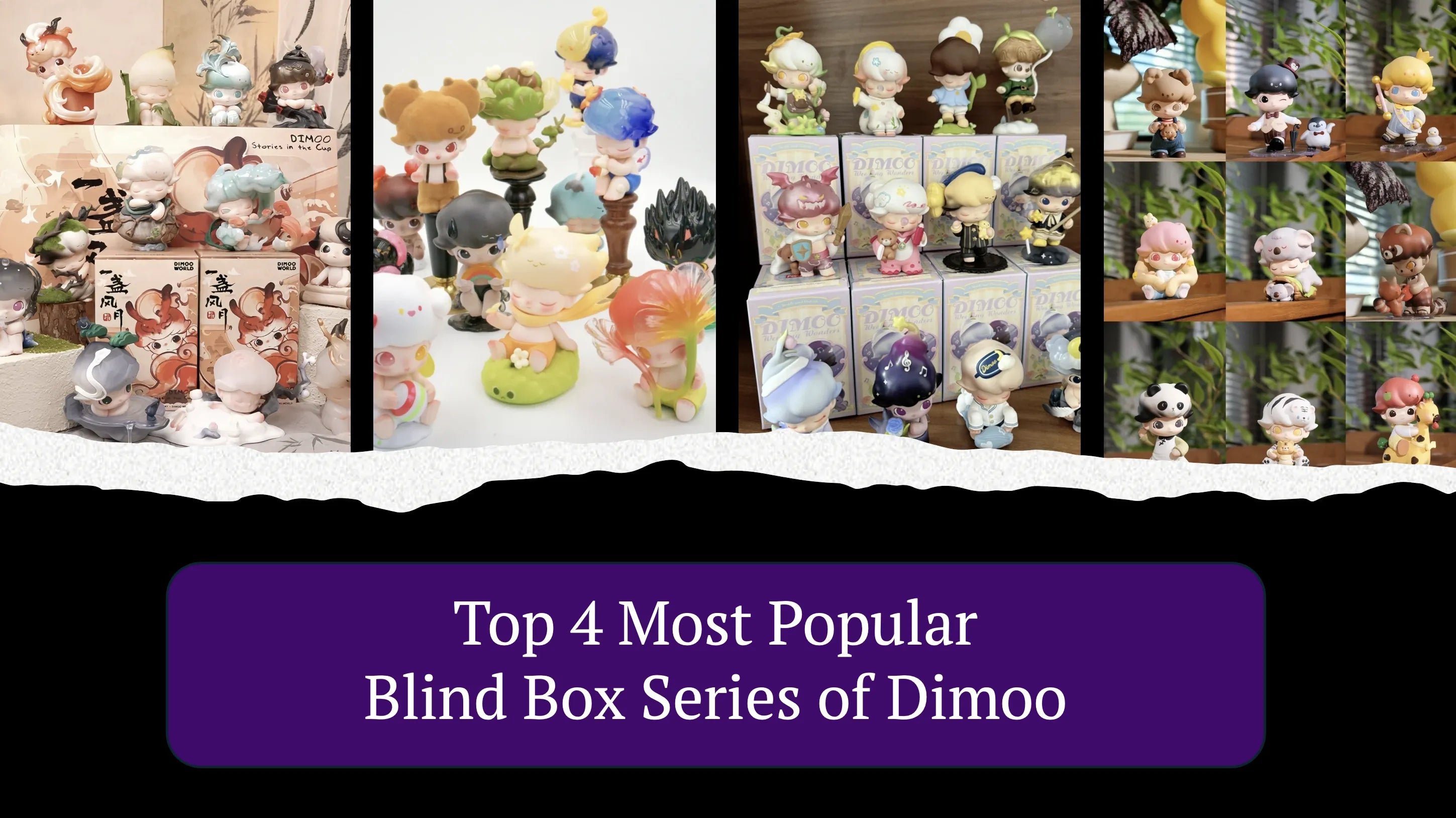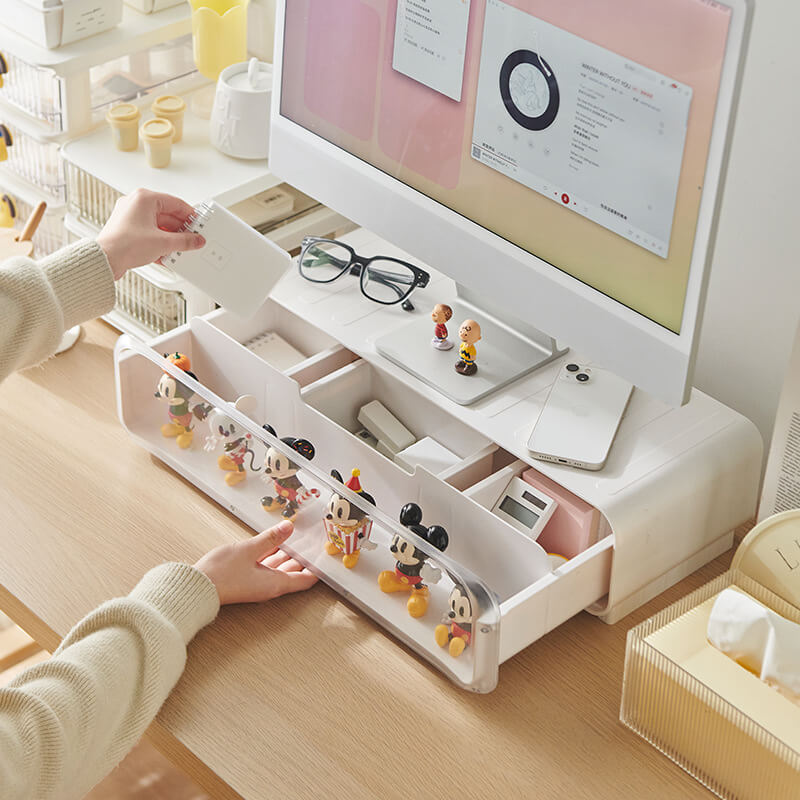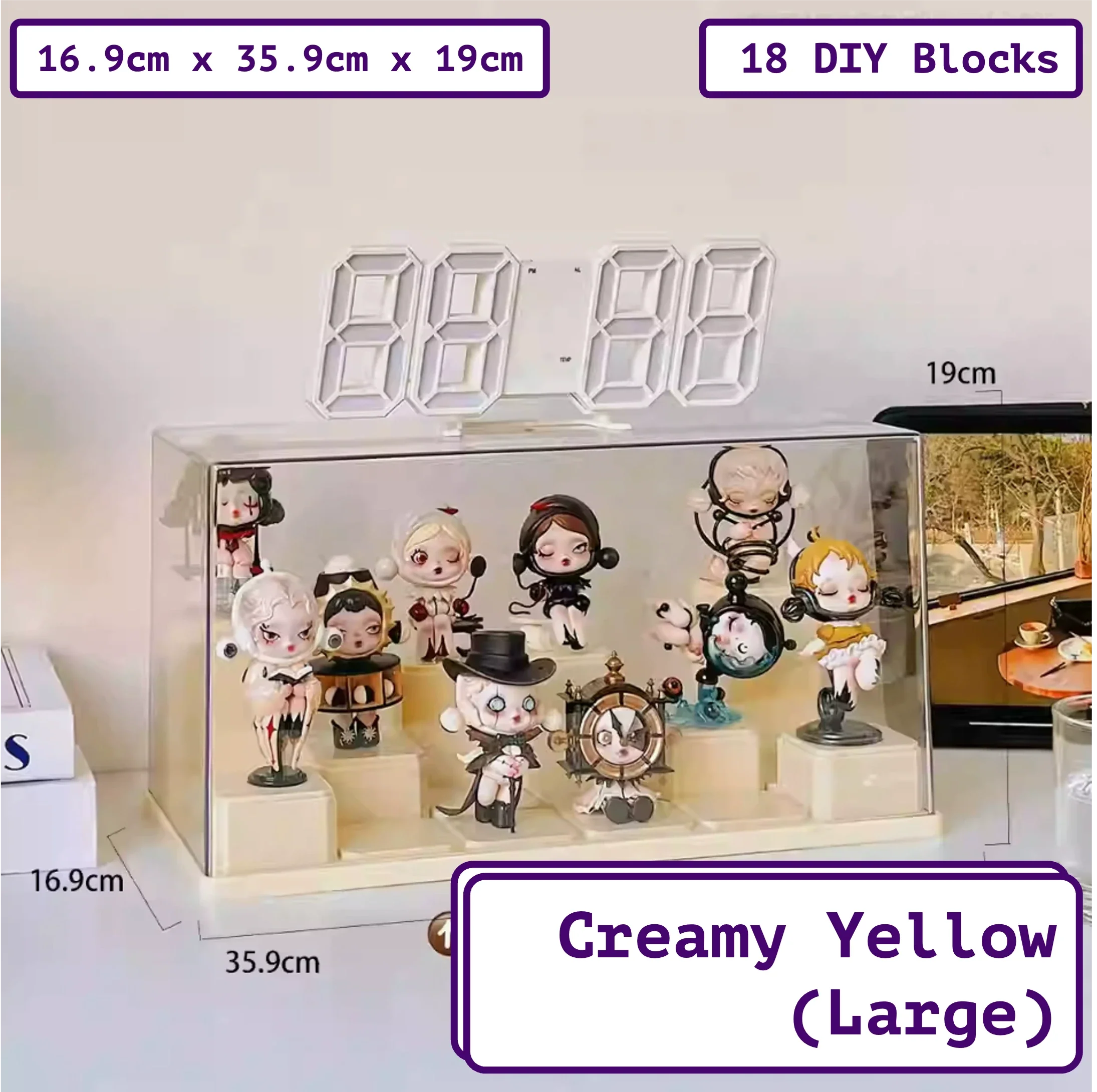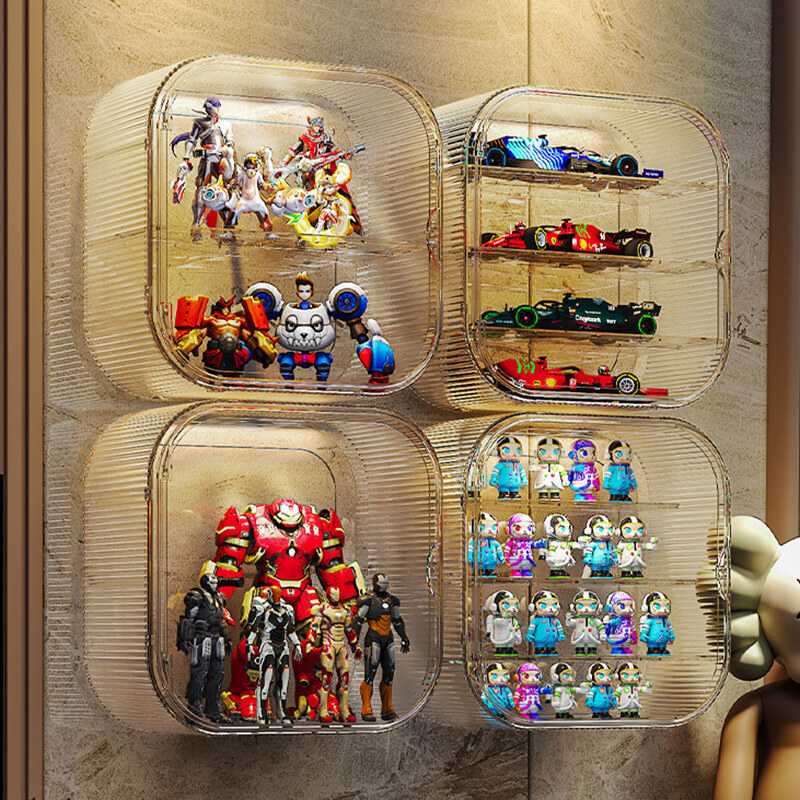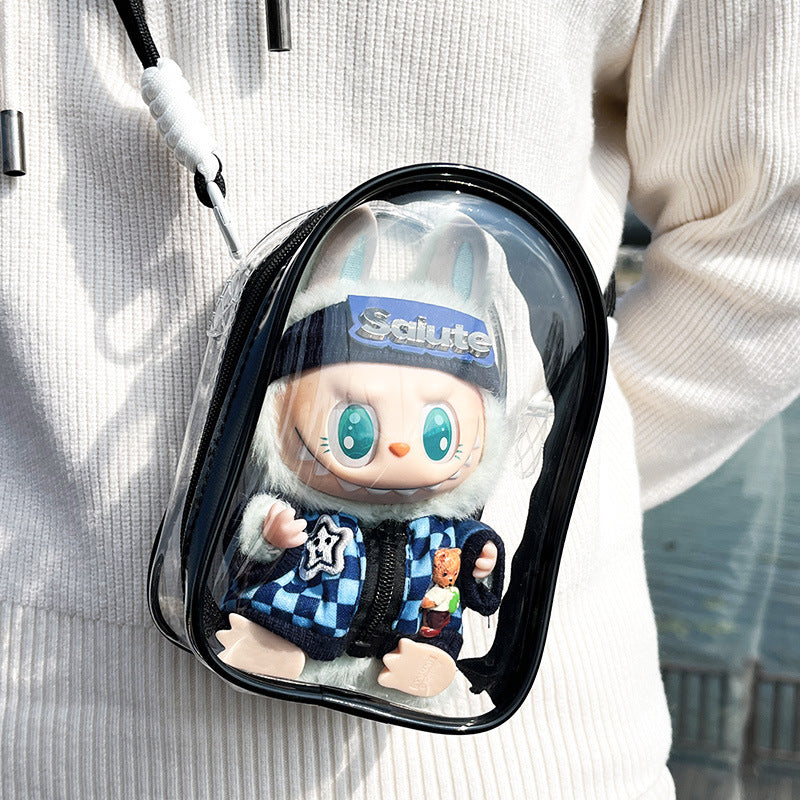HIRONO Reshape Series: All Meanings Explained
The HIRONO Reshape Series is a journey into transformation, resilience, and self-discovery. Each figure, from the stitched Healing to the burdened Parasite, tells a story about the messy, beautiful process of becoming. Dive into the meanings behind these hauntingly relatable...
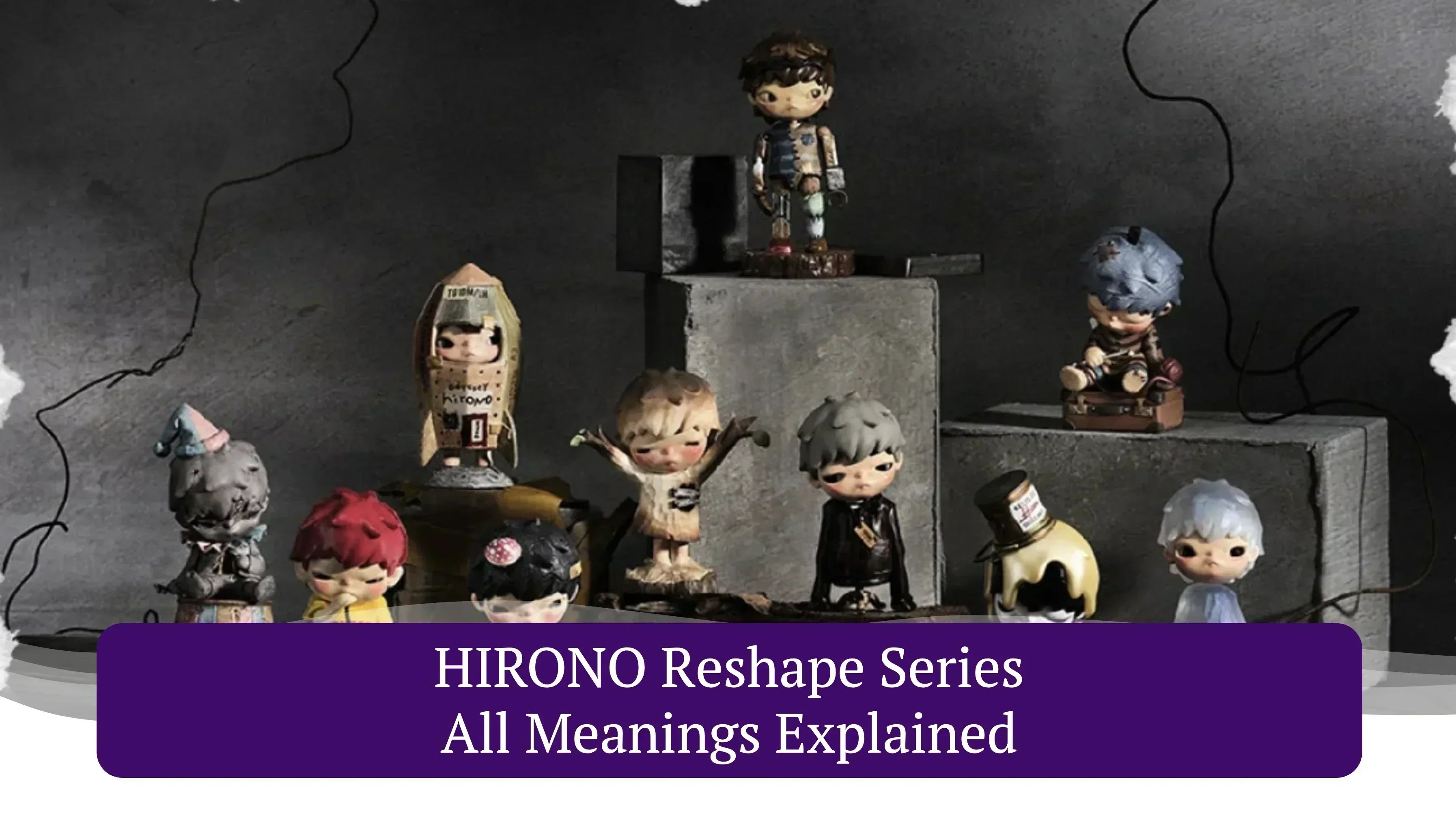
Introduction: Sculpting the Self
In a world that constantly asks us to change, who do we become? The HIRONO Reshape Series invites us to explore this question.
Released on December 29, 2023, this set of nine unique blind box figures (plus one secret edition) is more than just a collectible—it’s a journey into the art of self-redefinition.
Designed by POP MART, the series delves into the process of transformation. Like a sculptor, we chip away at who we are. We lose pieces along the way. But with each cut, we step closer to an unknown future.
This series isn’t just about change. It’s about courage. It’s about embracing the messy, uncertain process of becoming.
Healing | 愈合: Stitching the Self Back Together

Sitting quietly on a suitcase, the Healing figure looks fragile yet resilient. Its body is stitched together like a patchwork doll. Scars become part of its story.
In its hands, a needle and thread. It’s either just finished repairing itself or is about to begin. The act of healing is ongoing.
This figure speaks to anyone who’s been broken. It’s about the quiet strength it takes to piece yourself back together. The stitches aren’t perfect, but they hold.
Healing reminds us: scars don’t mean the end. They’re proof that we’ve survived.
Paradise Lost | 失乐园: The Forgotten Clown

Once, it brought joy. Now, it sits broken and forgotten. The Paradise Lost figure is a relic of what used to be.
Its clown-like appearance hints at a past filled with laughter. But the joy is gone. The clothes are worn, the hat is tattered, and the eyes are hollow.
Behind it, a rusty winding key. It’s a reminder of movement, of purpose. But the key no longer turns. The figure is still, its reason for being lost to time.
This piece speaks to the pain of irrelevance. It’s about being left behind, abandoned by the world.
Paradise Lost reminds us: even the brightest lights can fade. But in the stillness, there’s a quiet kind of beauty.
Fading | 消逝: The Slow Disappearance

Stories, memories, time, feelings—they all slip away. The Fading figure stands on a rock, its body half-transparent. It’s as if it’s dissolving into the air.
Its cloak and hair shimmer like glass or ice. Delicate, fragile, and beautiful. But the beauty is fleeting. The figure knows it’s disappearing.
Crystals grow at its feet. They’re solid, real, and permanent. A contrast to the figure’s fading form.
This piece is about loss. It’s about the things we try to hold onto, even as they vanish.
Fading reminds us: some things can’t be saved. But their memory can still shine.
Burst | 膨胀: The Breaking Point

Bright colors, shiny surfaces—the Burst figure looks like a toy ready to pop. It’s inflated, stretched thin, and biting a tube connected to itself.
The front shows red hair and yellow cloth. The back reveals blue hair and green cloth. Two sides, one body. It stands on a cloud-like base, as if floating in uncertainty.
This figure is about pressure. It’s about holding in emotions until they reach a breaking point. The act of blowing into itself is both creation and destruction.
Burst reminds us: there’s a limit to how much we can take. Sometimes, letting go is the only way to survive.
Parasite | 寄生: The Weight of Growth

Mushrooms sprout from its head, its hand, and the ground beneath. The Parasite figure stands still, burdened by what grows on and within it.
This isn’t a healthy growth. It’s something that feeds on its energy. The figure looks tired, as if it’s being drained.
The mushrooms could be negative thoughts, toxic relationships, or anything that takes more than it gives. They’re part of the figure now, impossible to ignore.
Parasite reminds us: sometimes, growth isn’t about thriving. It’s about learning to live with what we can’t control.
Voyage | 偏航: The Cancelled Odyssey

A rocket-shaped figure stands on the moon. Its body is marked with labels: “TG 10 M/LH,” “Handle with Care,” “Odyssey Hirono,” and “Cancelled.” It’s ready for adventure but going nowhere.
The cardboard spaceship suggests dreams built by hand. But the word “cancelled” tells a different story. Plans fall apart. Journeys end before they begin.
This figure is about ambition and disappointment. It’s about the courage to dream and the pain of being held back.
Voyage reminds us: even cancelled journeys leave their mark. The moon beneath its feet is proof—it got somewhere, even if it wasn’t the destination.
Drowning | 湮浸: The Weight of Gold

A paint bucket sits on its head. Gold paint spills over, covering its body and pooling on the ground. The Drowning figure is beautiful, but it’s drowning in its own shine.
The gold is tempting. It’s bright, valuable, and eye-catching. But it’s also heavy. It traps the figure, leaving no room to breathe.
This piece is about being consumed by what we desire. Fame, money, expectations—they can all feel like gold. But too much can suffocate us.
Drowning reminds us: not everything that glitters is freeing. Sometimes, it’s a weight we can’t escape.
Woodcarving | 树偶: Shaped by Time

Carved from wood, the figure stands still. Branches and leaves grow from its body. It looks calm but weary, as if it’s been shaped by years of wind and rain.
This piece is about patience. It’s about the slow, steady changes that life carves into us. Growth and decay are part of the same cycle.
The figure blends into nature. It’s a reminder that we’re part of something bigger. Time leaves its mark, but it also gives us roots.
Woodcarving reminds us: even when we feel worn down, we’re still growing.
Costume | 假面: The Mask We Wear

A leather jacket, a serious face—the Costume figure looks tough. But behind the mask, there’s a silly grin. It’s a reminder: what we show isn’t always who we are.
The mask is removable. It’s a choice to hide or reveal. But even when we take it off, the act of wearing it changes us.
This figure is about duality. It’s about the roles we play to fit in, to survive, or to protect ourselves.
Costume reminds us: beneath every mask, there’s a person trying to be seen.
Puppet | 傀儡: The Strings We Can’t See


Mismatched parts, rough stitches—the Puppet figure looks pieced together. It’s tired, unhappy, and pulled in every direction.
This secret edition figure is about control. It’s about feeling like a puppet, shaped by outside pressures and expectations. The strings are invisible, but they’re there.
Others are mirrors, but the reflection isn’t you. It’s a version of you, filtered and reshaped.
Puppet reminds us: breaking free starts with seeing the strings.
Conclusion: Reshaping Ourselves, One Figure at a Time
The HIRONO Reshape Series is more than a collection of blind box figures. It’s a journey into the heart of what it means to change, grow, and survive. From the stitched-together Healing to the burdened Parasite, each figure tells a story about the struggles and triumphs of being human.
These characters remind us that transformation isn’t always easy. It’s messy, painful, and often uncertain. But it’s also beautiful. Every stitch, every scar, every broken piece is part of who we are.
If these figures resonate with you, why not give them a home that honors their stories? At Fig Palace, we offer premium display cases, bags, and containers designed to protect and showcase your collectibles. Whether it’s the Reshape Series or any other HIRONO collection, our products ensure your figures stay safe and look stunning.
Want to dive deeper into the world of HIRONO? Check out our comprehensive HIRONO IP guide. It covers every series, including Reshape, and explores the rich stories behind each figure.
Visit Fig Palace today to explore our collection and find the perfect way to display your HIRONO figures. Because every emotion, every story, deserves to be seen.


